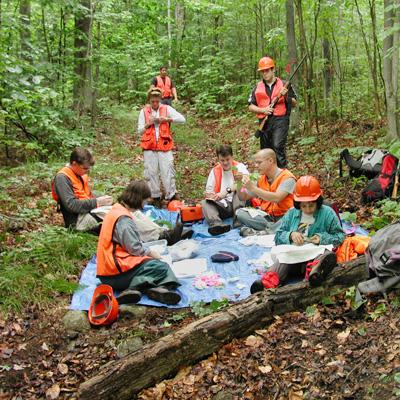Effects of Calcium Silicate Fertilization at Watershed 1 of Hubbard Brook Experimental Forest, N.H. on the Foliar Biochemistry and Physiological Function of Conifer and Hardwood Trees

Acidic deposition has caused a depletion of calcium in Northern Forest soils. Calcium plays a vital role in the growth and productivity of forest trees. Several studies have demonstrated that calcium and other essential cations (ions with a positive charge) are available in less-than-adequate quantities in various forest ecosystems in the United States, including the Hubbard Brook Experimental Forest, a Long Term Ecological Research site in New Hampshire.
An interdisciplinary team of scientists from institutions in New Hampshire, Vermont, Connecticut, New York, and Michigan established a long term study in which wollastonite (calcium silicate) was added to watershed 1 (WS1) at Hubbard Brook in 1999 to evaluate its effects on forest ecosystem functions. NSRC researchers analyzed the effects of calcium addition on soluble ions, chlorophyll, polyamines, and amino acids in tree foliage of three hardwood species (sugar maple, yellow birch, and American beech). They further examined these effects in relation to elevation at calcium-supplemented WS1 and untreated WS3 watersheds.
Foliar soluble calcium increased significantly in all species at mid and high elevations at calcium-supplemented WS1. This was accompanied by increases in soluble phosphorus, chlorophyll, and two amino acids, glutamate and glycine. Researchers also observed a decrease in other amino acids that are known metabolic indicators of physiological stress. In general, these changes were species-specific and were dependent on elevation. Comparison of metabolic data from these three species reinforces earlier findings that sugar maple is the most sensitive and American beech the least sensitive species to soil calcium limitation, and there was an increase in sensitivity with an increase in elevation.
